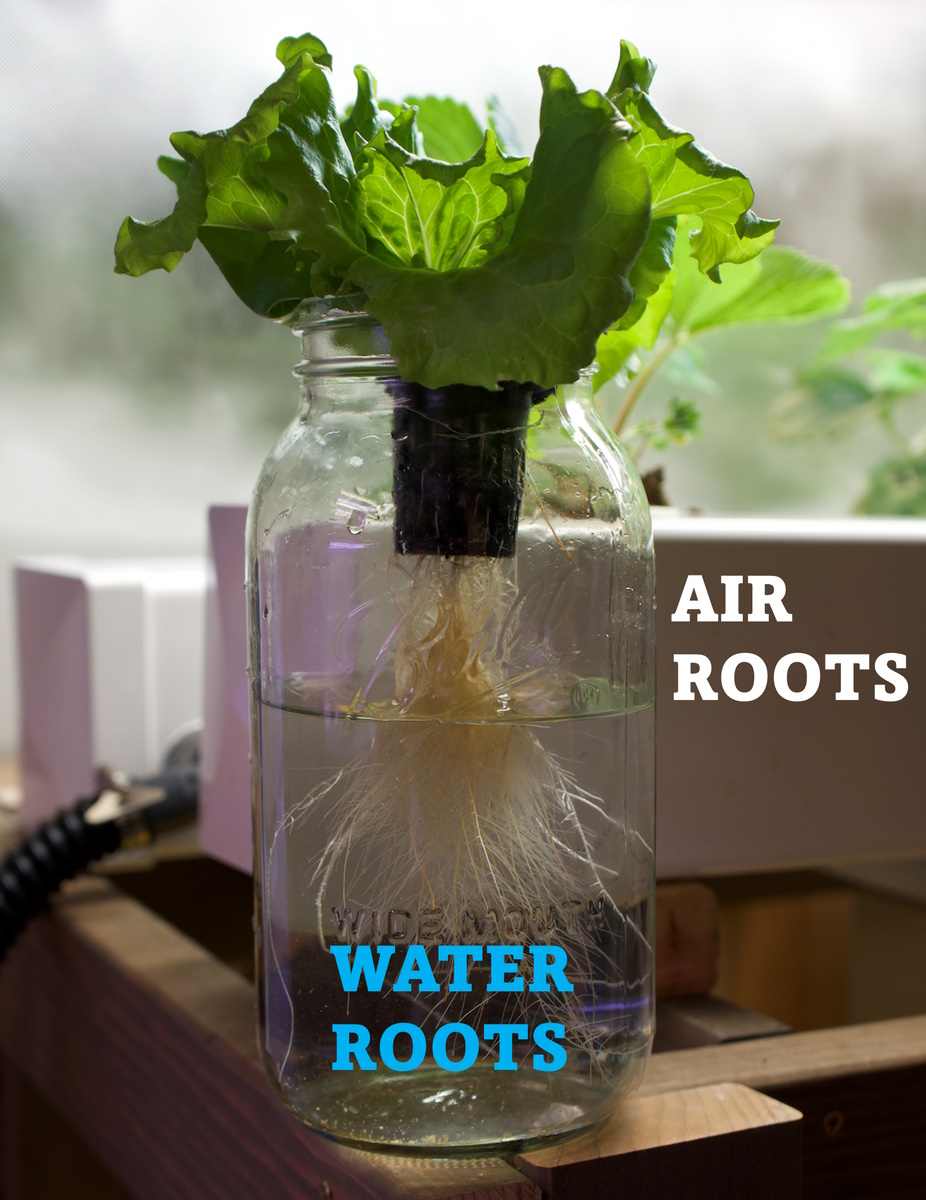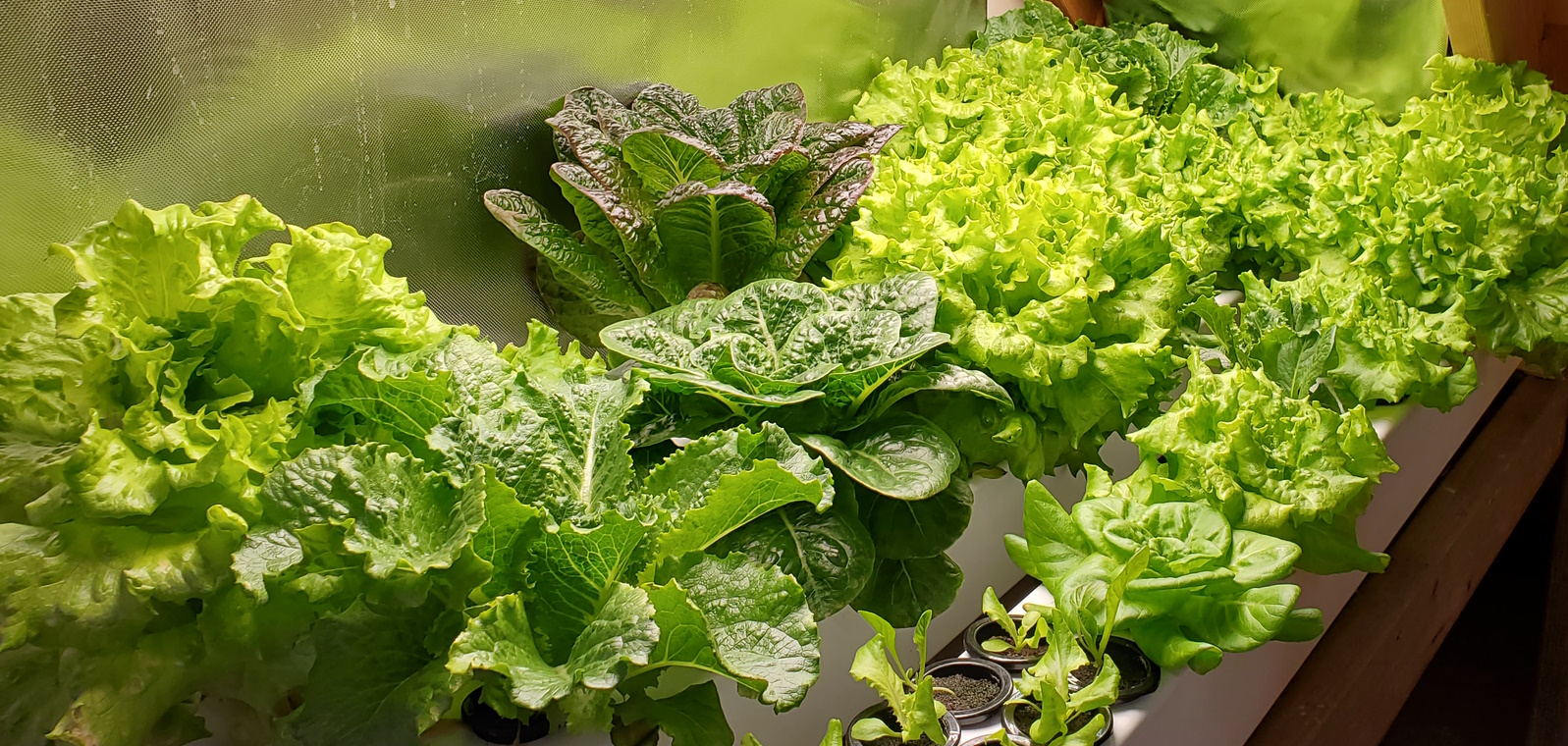5 Reasons Why I Don't Use Kratky for Hydroponics
One of the most popular methods of hydroponic growing, especially for hobby growers, is the Kratky method. And for good reason, it is simple, requires no electricity, and is extremely low maintenance. Almost “set it and forget it”. But I don’t use it. Why? Well let me start with a brief background on how the Kratky method works.
How Kratky Works
To implement the Kratky method, plants are placed on the top of a reservoir, with the roots of the plant hanging down into a nutrient solution in the reservoir. A “reservoir” could be a mason jar, tote, milk jug, or countless other options. To begin with, the plant has no roots, and so the nutrient level needs to be high enough to keep the growing medium moist while the seed germinates and develops its first roots. Moving forward, the plant grows and extends its roots down into the nutrient solution. At the same time, the nutrient level goes down due to evaporation and use by the plant. This causes some of the roots to be exposed to air, and some to the nutrient solution. This is important, because plant roots need oxygen in order to function properly. We end up with two “sections” of roots – air roots and nutrient roots. If planned correctly, the plant should be ready to pick just before it uses up the water and nutrients in the reservoir.

The primary advantage of Kratky is how simple it is. You don’t need to maintain a complicated system. It is very popular with new growers for that reason. It is also great for off-grid or remote applications where there is plenty of sunlight but no electricity.
5 Reasons Why I Don't Use Kratky
So why don’t I use the Kratky method for hydroponics? It has great use cases, but they don’t line up with my goals as a hydroponic grower. Let me break it down into 5 reasons why I don’t use Kratky for hydroponics.
1. Does Not Scale Easily
With hydroponics, I set out to grow a lot of produce in a small area. This means lots of plants growing at the same time, all in various stages of growth. With Kratky, growing a few plants is easy, but scaling up becomes more difficult. Having 50 mason jars on a shelf is not practical. You could use a large reservoir, such as a tote, but the size and weight becomes prohibitive.
2. Hard to Stack Vertically
One of the biggest advantages of hydroponic growing is that you can go vertical. You can literally have multiple plants growing in the same floor space since they are stacked on top of each other. With Kratky, vertical expansion is difficult. Similar to what we just talked about with scaling, having large reservoirs stacked vertically would require very robust shelving to hold all the weight of the water in those reservoirs, and the extra vertical space those reservoirs take up would limit how many systems you could fit in a space.
3. Successive Planting is Difficult
We love to have a continual supply of produce, all year long. To do this, successive planting is required, where you plant new seeds each day or each week so that there are always some at maturity. Kratky does not allow for different plants at different growth stages to be in the same reservoir. Some plants would have roots reaching the nutrient solution and others would be totally dry, killing the plants. So, to do successive planting with Kratky, you would need different reservoirs for each stage of growth, increasing the complexity.
4. Does Not Use Light Efficiently
With indoor hydroponics we need to use grow lighting. That requires electricity, which costs money, so we want to make the best use of that light. To do that, we want our plants to be absorbing most of that light, instead of letting it hit the reservoir or the ground or the walls, etc. The best way to do that is to space plants close together when they are small, and further apart as they mature. With Kratky, the best way to achieve this would be to have separate reservoirs for each plant (such as mason jars). But now we’re back to the problem of managing 50+ different mason jars.
5. Susceptible to Spills
When growing outdoors, spills are no problem. The water hits the dirt or grass below, no big deal. Indoors is a different story. We want to be extra careful not to spill onto basements, carpets, windowsills, etc. Small Kratky containers in particular can be susceptible to tipping over and dumping their contents. There are ways to mitigate this of course, but when dealing with large numbers of Kratky containers you are bound to accidentally tip one over. This is especially true if you have kids or pets in the house.
So what do we use instead to mitigate these disadvantages?
What I Use Instead
We have been using recirculating hydroponic rail systems for several years and love them. They have a reservoir with nutrient solution, similar to Kratky, but the nutrient solution is pumped through rails containing plants. This has several advantages.

1. Scales Easily
Adding more plants is as simple as adding more rails or drilling more holes. The rails are much smaller and lighter than a full reservoir. Growing 50 plants is not much harder than growing 5 plants.
2. Stacks Vertically
Rail systems are easy to stack vertically. They are light and don’t require much vertical space. The reservoirs to supply them can be placed on the ground, so the shelving system doesn’t have to bear the weight of all the nutrient solution. They can even be set up to cascade, where the top system drains into the system on the shelf below, and so on.
3. Successive Planting Built In
We designed our rail systems to have successive planting built in. The same system can nurture a plant all the way from seed to harvest and can hold plants that are at different stages of growth. This ensures we always have a crop ready.
4. Uses Light Efficiently
Our rail systems are built to use light as efficiently as possible. When plants are small, they are placed right next to each other. As they grow, they are moved through the system, spaced further apart as they go.
5. Spill Resistant
Our rail systems are robust and cannot be tipped over. In the years we’ve been growing with them, we’ve never had one fail or spill (and we have 3 little kids!).
Summary
The Kratky method can be a great option for growing hydroponically. It can be ideal if you have a good outdoor space with ample sunlight, you have a growing area without electricity, or just want to grow a few plants in a simple way.
But it also has its limitations, especially when growing indoors. For highly efficient indoor growing, we’ve found hydroponic rail systems to be a very effective option. Want to build your own hydroponic rail system? Check out our FREE guide, which shows you the same design we use and each step of the build process.

